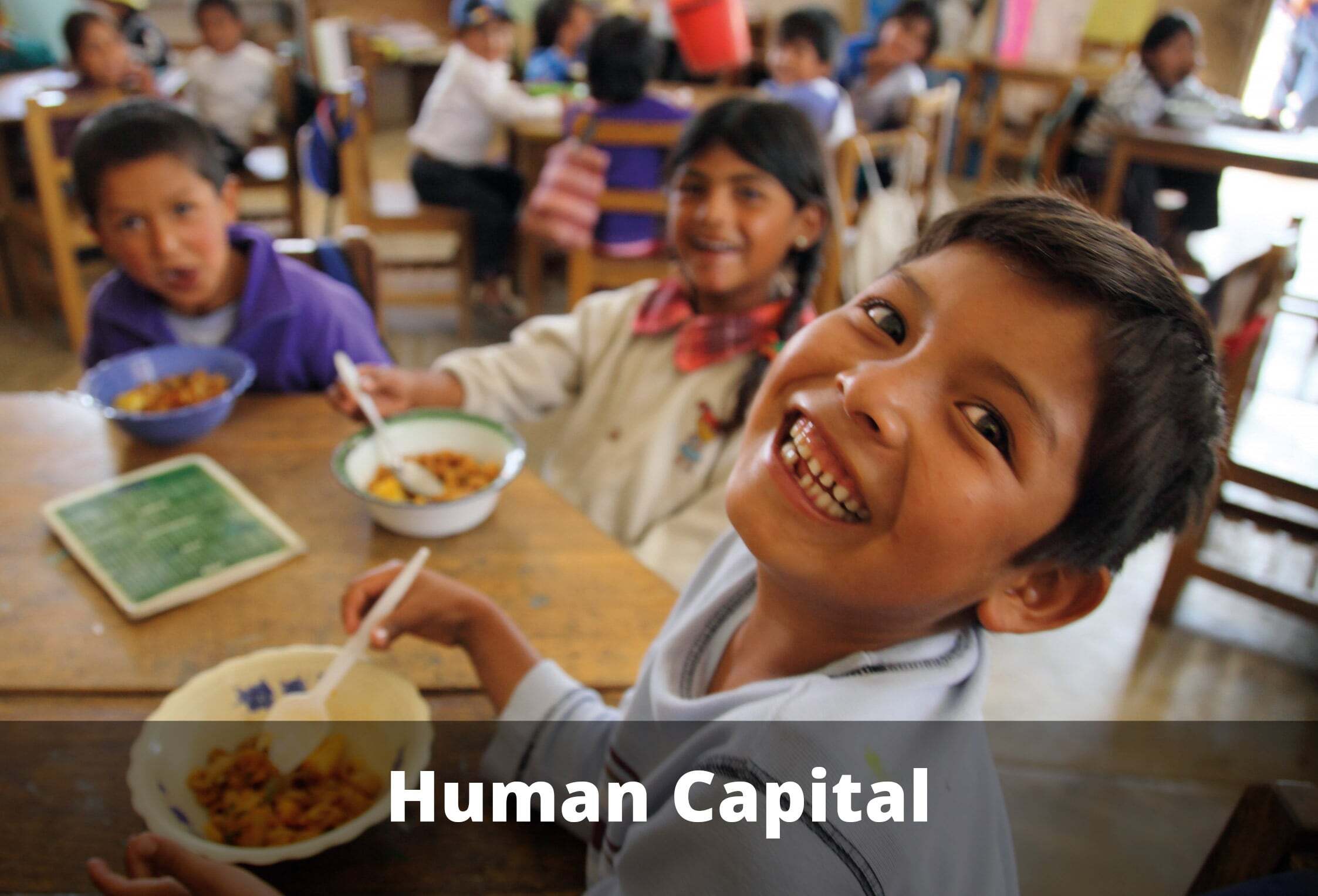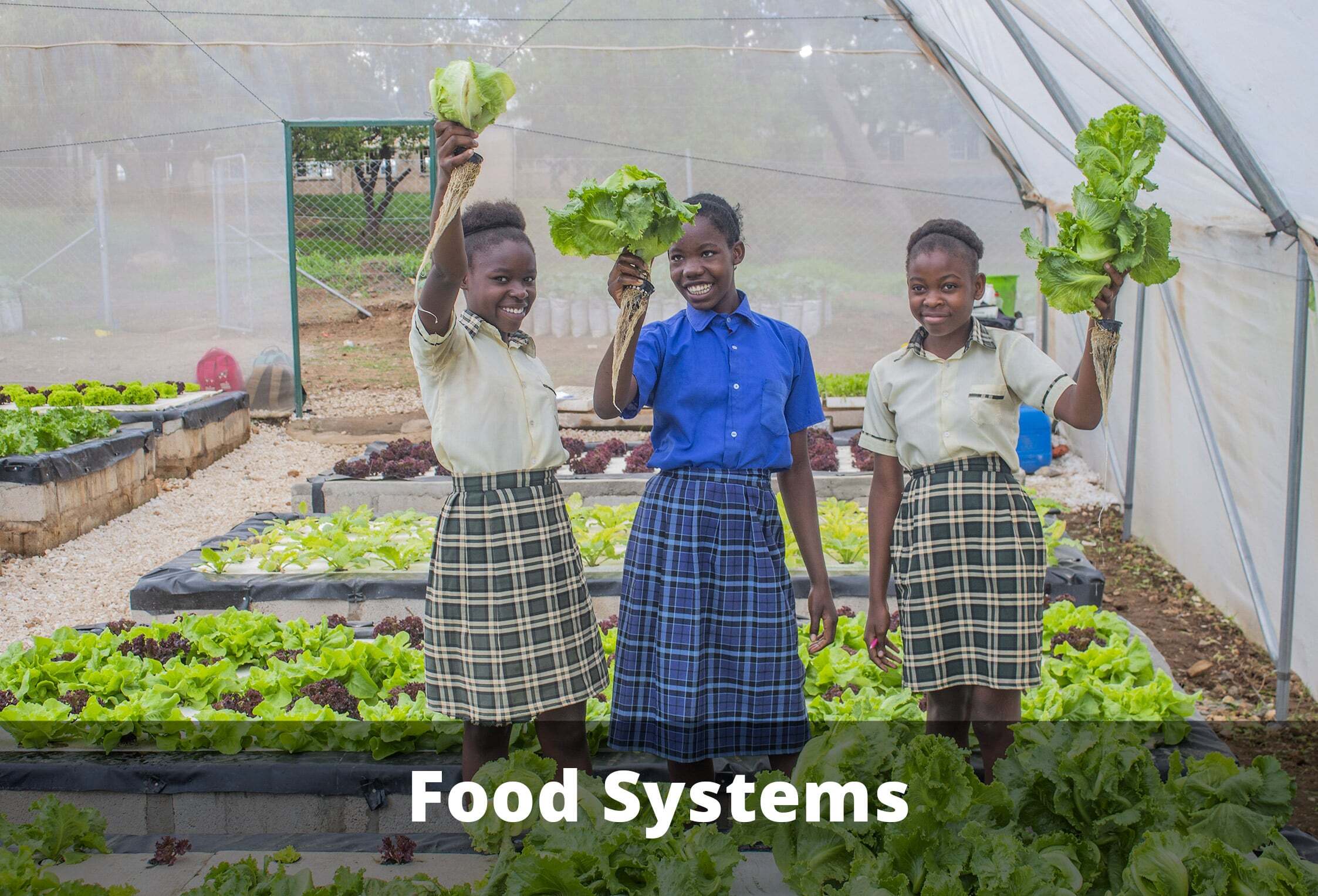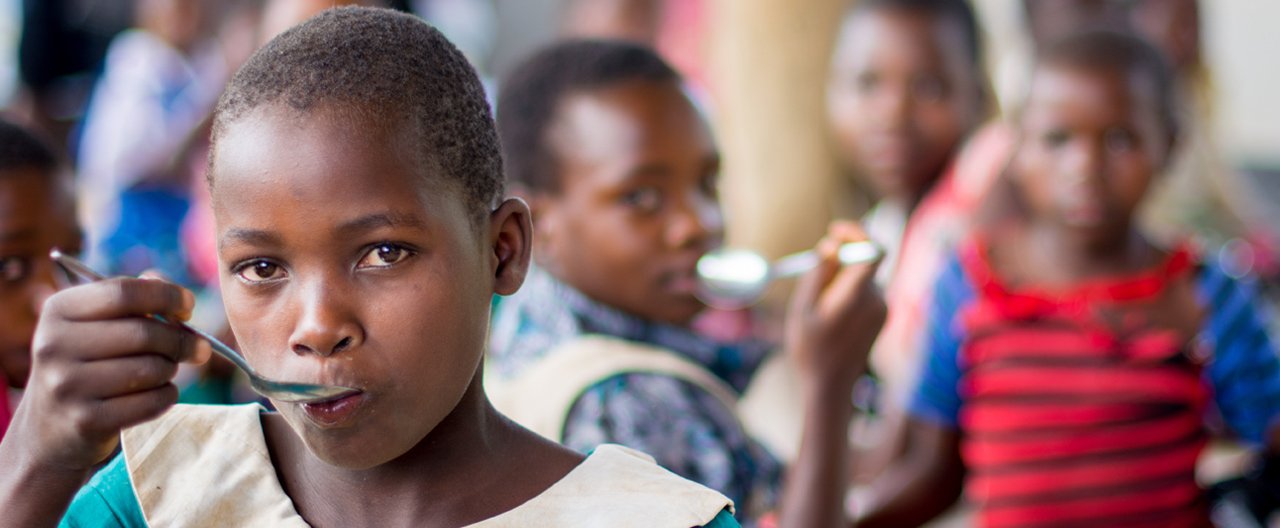School Programs That Feed Hungry Kids
WFP's mission is to ensure that all school aged children have access to school meals and are healthy and ready to learn
Every day, millions of children around the world go to school on an empty stomach—hunger affects their concentration and ability to learn. There are also millions of children—particularly girls—who simply do not go to school because their families need them to help in the fields or perform domestic duties. In conflict-affected countries, where children are twice as likely to be out of school than their peers in stable countries – 2.5 times more likely in the case of girls.
The World Food Programme (WFP) has six decades of experience supporting school feeding and health initiatives and working withmore than 100 countries to set up sustainable national school feeding programmes. WFP's ultimate goal is to encourage and facilitate national government ownership of these programmes - a transition that has already happened in 48 countries. In 2020,15 million schoolchildren received nutritious meals and snacks from WFP. Working with governments to build capacity, WFP helped bolster the national school feeding programmes of 65 countries, benefitting a further 39 million children. WFP is also a proud supporter of the School Meals Coalition, which aims at improving or restoring national, sustainable school meal programmes, to ensure every child has the opportunity to receive a healthy, nutritious meal in school by 2030.
Better health and nutrition allow children to learn and perform better, broadening their educational opportunities. School feeding and health programmes empower girls by dissuading parents from marrying them off early, which halts their education and can result in child pregnancies. School feeding programmes act as an incentive for families to enrol and keep children in school. Relieving parents from having to budget for lunches, they boost incomes and help to alleviate poverty—school meals represent10 percent of the income of poor and vulnerable households, a significant saving for families with more than one child.
In benefitting children and their families, school feeding and health help build what is known as 'human capital'—the sum of a population's health, skills, knowledge, experience and habits.
When school feeding programmes are linked to local smallholder farm production, they benefit local economies as well. In certain contexts, they can help build trust in national education systems and foster social inclusion.
Currently 73 million children living in extreme poverty in 60 countries need urgent nutritional assistance. WFP's new school feeding strategy, published in January 2020, reaffirm the organization's commitment to ensuring that all primary schoolchildren have access to nutritious meals at school. WFP works with partners to ensure that meals are accompanied by a broader package of health and nutrition services, such as deworming, health screenings, vaccinations and WASH (water, hygiene and sanitation training).
WFP works with governments to tailor its responses: in emergency settings where countries do not have the capacity to meet the nutritional and educational needs of all vulnerable children, WFP will scale up its coverage and operations; within more stable contexts, WFP helps to strengthen systems and provides technical assistance, improving the scale and quality of national programmes and supporting governments in innovating and testing new approaches.
COVID-19 school closures map
WFP's global map to see the impact on school meals during COVID-19
See the map
Resources and Publications
-
WFP's School Feeding Strategy
-
In this strategy (2020 – 2030), WFP lays out its vision of working with governments and partners to jointly ensure that all primary schoolchildren have access to good quality meals in school, accompanied by a broader integrated package of health and nutrition services. Read more
-
Guidelines and manuals
-
WFP's guidelines and manuals help schools and governments reach as many pupils as possible with nutritious meals to make sure students are healthy and ready to learn. Today with hundreds and thousands of pupils out of the classroom, WFP and partners are working to mitigate the effects of the COVID-19 pandemic on school children through frameworks for reopening schools.
-
Advocacy and outreach
-
Research and evidence
-
2020 State of School Feeding Report uses the best available data sources to describe key aspects of coverage, implementation practices and costs of school-based health and nutrition programmes worldwide. It also seeks to analyse the direction and scale of change between 2013 and 2020, and to provide an update on advances in evidence and understanding of school feeding programmes.
-
Stories
-
Find podcasts, human stories, and updates about the students and communities who receive school meals.
School Feeding also contributes to:

School feeding programmes play a key role in helping children realise their potential, both for themselves and for their communities. Investing in human capital development of children are among the most effective and productive investments that countries can make.

School health and nutrition, including school meals, provide an incentive for families to send girls back to school, help girls stay in school, especially into adolescence, effectively preventing early marriage and delaying first pregnancy, both of which can trap women into poverty and social exclusion.

Home-grown school feeding has the potential to not only create demand for more diverse and nutritious local and traditional food, but also create stable markets, boost local agriculture, impact rural transformation and strengthen local food systems.
Transform a child's life through school feeding
Donate now

Source: https://www.wfp.org/school-feeding
0 Response to "School Programs That Feed Hungry Kids"
Publicar un comentario